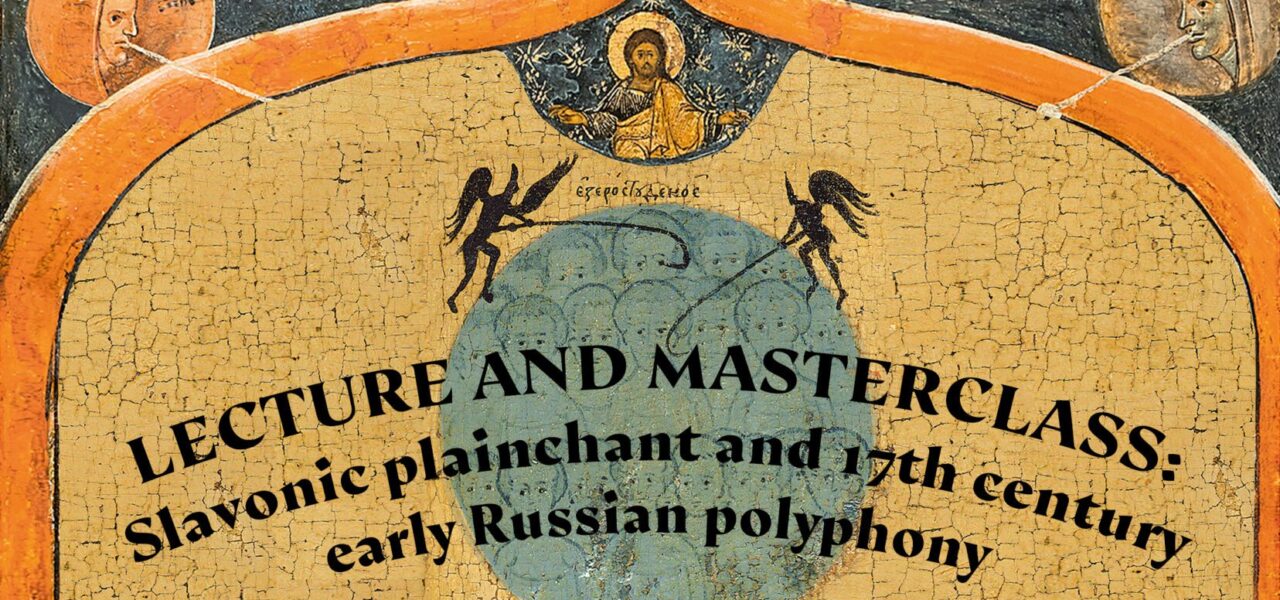Please consult our COVID-19 policies and resources for guidance on attending public performances.

Lecture and Masterclass: Slavonic plainchant and 17th century early Russian polyphony
Presented by Eugene Skurat
date & time
Thu, Apr 4, 2024
1:30 pm - 3:00 pm
ticketing
Free, Unticketed
- This event has passed.

Abstract:
The 17th century was the time of the highest flowering of choral musical culture in Russia and Ukraine. This century was also the richest in the variety of musical styles of liturgical music. In the 16th century, based on medieval monody, two types of polyphonic music began to develop: Troestrochie and Demestvo. But almost all manuscripts of these polyphonic styles were composed in the mid-17th century. The medieval monody itself, or Znamenny chant, is closely related to the Byzantine melos of the 12th-14th centuries. Troestrochny and demestvenny polyphony are in no way related to Western European music; instead of the European major-minor modal system, the aesthetics of alternating consonances and dissonances, Old Russian polyphony relied on the ancient scale of Znamenny chant, and the polyphony created in this modal system sounded predominantly dissonant for the European listener.
In the second half of the century, samples of European baroque music and their a cappella analogues for Orthodox worship, created by Ukrainian, Belarusian and Lithuanian musicians, were first heard at the court of Alexei Mikhailovich. At the end of the 17th century, the baroque musical style was mastered by Russian musicians. At the same time, a special style of consonant polyphony appeared in Russia—“continuous polyphony”, based on a cantus firmus in the form of an unchangeable ancient monody and continuous homophonic vocal accompaniment. In terms of compositional technique, this type of early consonant polyphony can be likened to medieval organa, and its sound is reminiscent of European Renaissance music. In the 18th century, this type of polyphony was Peter the Great’s favorite. This lecture will showcase an example of Znamenny medieval monody; its melodic formulas (elements) will be compared with Byzantine archetypes, and it will be shown how these melodic formulas became the basis of various polyphonic styles in the 17th century. The masterclass portion of the event will feature a quartet of graduate students from the Princeton Music Department who will demonstrate the transformation of the chant through various polyphonic styles, with an opportunity for audience participation.
Bio of speaker:
Evgeny Skurat is a professional singer, conductor, musicologist, and teacher. He is the director of the ancient Russian music ensemble “Chronos”, with whom he recorded an anthology of ancient Russian polyphonic music (10 CDs, the repertoire of which was performed and recorded for the first time). He was a soloist of the ensembles “Sirin”, “Drevnerusskiy Raspev” and is currently a soloist with the Labyrinthus ensemble. Focusing on musical repertoire from the Middle Ages to the present, Evgeny was the first performer of many works by the troubadours, in addition to organums and conducti of the Notre Dame school. As a soloist he has performed more than 20 Bach cantatas, in addition to English and French music of the Baroque era. He has recorded several vocal cycles by M. Weinberg and V. Silvestrov. He also performs Coptic and Syrian Maronite music, as well as secular Arabic music. Eugene has studied Byzantine, Indian and Gregorian vocal techniques. He is a leading specialist in Old Russian Kazan notation and Middle-Byzantine Round notation. Recently, he has published a large sheet music anthology of ancient Russian polyphonic music in 25 volumes. His collaborations include such musicians as Alexander Lingas, Benjamin Bagby, Andrew Lawrence-King, Teodor Currentzis, Marc Mauillon, Danil Ryabchikov.

